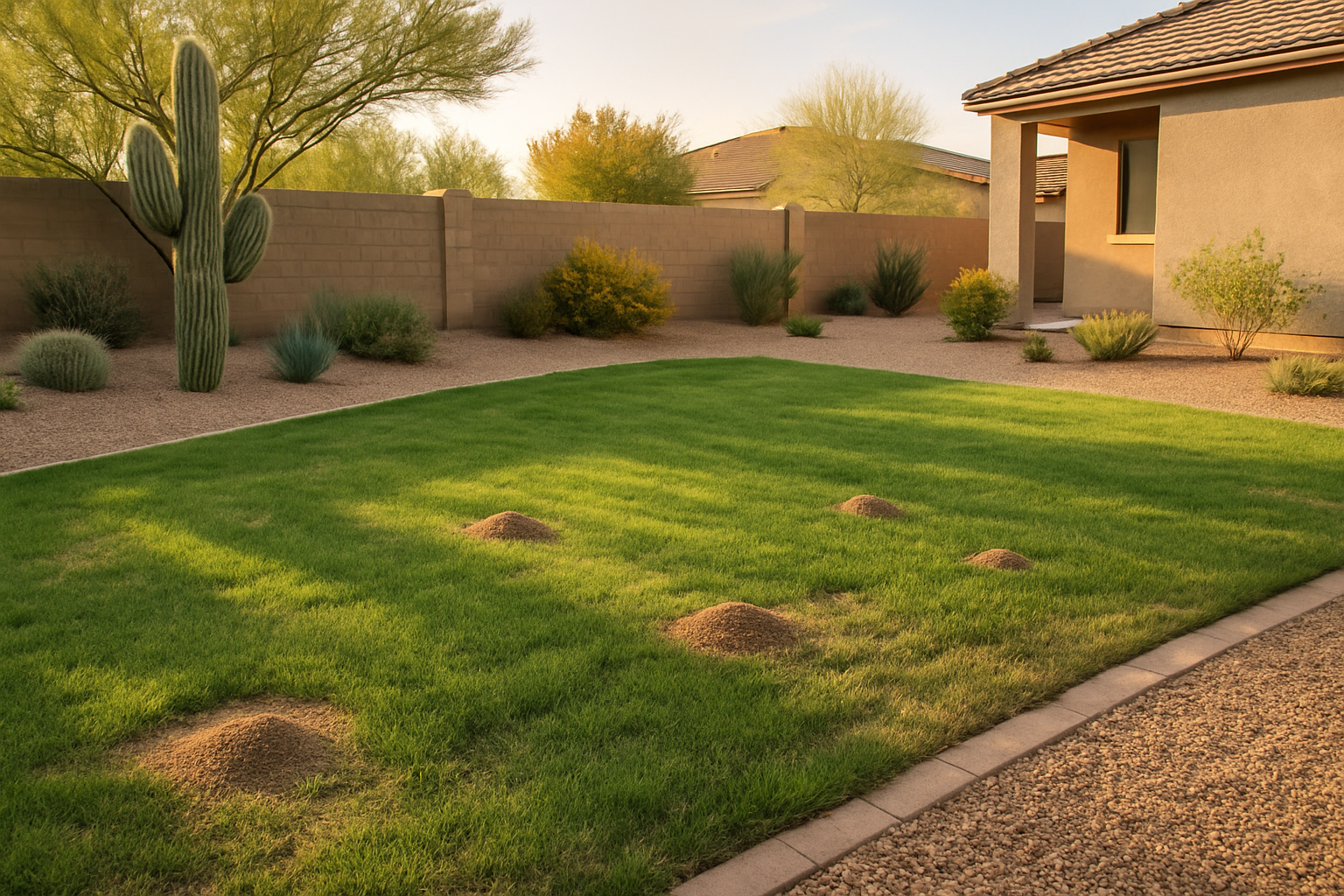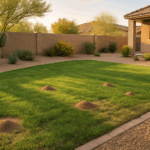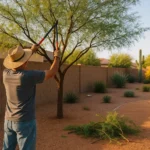For any proud homeowner in Gilbert, Arizona, maintaining a pristine lawn is a matter of pride. However, ant hills can pose a significant challenge. These tiny industrious creatures can transform a lush green lawn into a maze of mounds in no time. But worry not! With the right strategies, you can manage these ant hills and reclaim your lawn. This article will provide you with effective techniques to deal with ant hills in your lawn.
Understanding Ant Hills: The Why and How
Before we dive into the solutions, it’s crucial to understand why ants build these hills in the first place. Ants are nature’s soil aerators. They dig tunnels and create their colonies, which in turn loosen the soil, improve water flow, and enhance soil fertility. While these activities are beneficial for the ecosystem, they can be detrimental to a well-kept lawn.
The mounds or ‘hills’ you see are heaps of soil excavated by the ants as they construct their underground network of tunnels. In Gilbert, various species of ants can be found, each with their distinct habits and mound-building techniques. Understanding these habits can help in devising effective strategies to manage them.
Preventive Measures: An Ounce of Prevention is Worth a Pound of Cure
One of the most effective ways to manage ant hills is to prevent them from forming in the first place. Here are a few tips that can help:
- Maintain Proper Lawn Hygiene: Ants are attracted to food sources. Regularly clean up fallen fruits, food crumbs, and other potential ant attractants.
- Regular Lawn Maintenance: Routine mowing, watering, and fertilizing can keep the grass healthy and make it less hospitable for ants.
- Proper Watering: Here’s where our watering_chart_flair comes in. Overwatering or underwatering your lawn can make it more appealing for ants. Stick to a watering schedule that keeps your lawn hydrated without creating a waterlogged environment that ants love.
Remember, prevention is better than cure. Regularly practicing these measures can help keep your lawn free from ant hills.
Direct Action: When Prevention Isn’t Enough
Despite taking preventive measures, if you still find ant hills popping up on your lawn, it’s time for direct action. There are several ways to manage ant hills once they’ve formed:
- Physical Removal: This method involves disrupting the ant hill using a rake or a similar tool. Remember, this does not eliminate the ants; it merely disrupts their activities temporarily.
- Biological Control: Introducing natural predators, like certain types of birds, can help control the ant population. Creating a bird-friendly environment in your yard can be an effective way to manage this issue.
- Pesticides: If the ant hill problem persists, you might need to resort to using pesticides. Choose eco-friendly options and always follow the instructions on the label.
Straightforward_icons can be used to remember these steps: rake for physical removal, bird for biological control, and spray can for pesticides.
Seeking Professional Help

When all else fails, or if the ant infestation is too severe, consider seeking professional help. Pest control experts have the knowledge and tools to deal with such issues effectively. They can identify the type of ants causing the problem and choose the most effective treatment.
Remember, professionals like us here at YardBonita are always ready to help you reclaim your yard from these tiny intruders. We have years of experience dealing with Arizona’s specific lawn care challenges, including ant hills.
Conclusion
Ant hills can be a nuisance for any homeowner who takes pride in their lawn. However, with the right knowledge and strategies, you can effectively manage these tiny mounds and maintain a lush, green lawn. Whether through preventive measures, direct action, or seeking professional help, you have the tools needed to tackle this issue head-on.
Remember, a healthy lawn is not just about aesthetics; it’s also about creating a balanced ecosystem where every creature has its place. With careful management, even ants can contribute positively to your lawn’s health without causing unsightly mounds. So, Gilbert homeowners, let’s reclaim our lawns from these industrious intruders!






